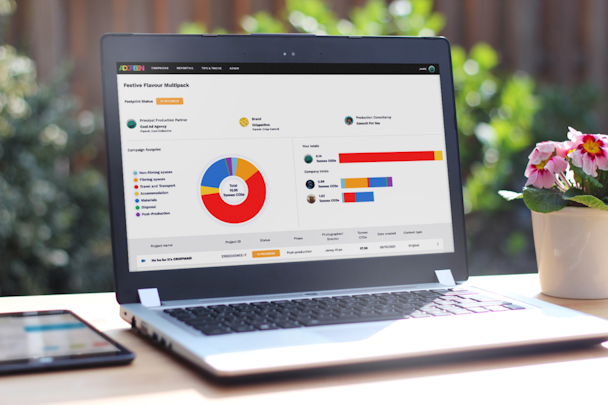Travel and production are advertising’s biggest polluters, according to AdGreen data
Following its first annual review, AdGreen calls for advertisers, creative agencies and production companies to increase data analysis and adopt more sustainable approaches to content creation.

AdGreen launched its calculator in May 2021 / Advertising Association
The Advertising Association-backed carbon calculator, which was launched in May 2021 has been adopted by the likes of Unilever, Adam&Eve and Havas, but the organization says immediate measures must be actioned to lower the carbon cost of ad production; including fresh approaches to travel and transport, renewable energy choices in production facilities and locations and data collection and analysis from a higher volume of campaigns.
The report shows that, overall, 2,446.1 tCO2e (metric tonnes of CO2 equivalent) were emitted as a result of the 515 projects completed in 2022. That’s equivalent to 527 petrol-powered cars being driven for one year.
Advertisement
It also identified that travel and transport activities across all projects emitted the most tCO2e, 62.4%, while the energy and fuels used to power spaces accounted for almost a quarter (24.6%) of all emissions.
But Jo Fenn, global director of AdGreen, says it believes that there are many more projects similar to those in the 50 tCO2e and above category being produced across the industry both in the UK and beyond, not yet being recorded. “It’s clear that engagement is needed from organizations working on larger scale productions so that we have a more even picture. As more of these larger projects are recorded in the tool, we expect the average project size to rise, along with the other related data points.”
AdGreen told The Drum that the more campaigns it has in the tool, the better picture it has of the industry standard overall. “Increasing the spread of these projects is also very important, as we know we're missing many of the larger, hero TVCs and without those, the current mean average project is skewed low,” a spokesperson said.
Advertisement
Speaking on how it will help to onboard more campaigns in the next year, it said “For our part, ongoing improvements to our training, resources, and calculator development will help, but we're also looking to users to make measurement a routine part of their production process. Engagement with brands is also key: we know there are over 500 brand accounts which don't have any users, but do have data available from both in progress and completed projects.”
But going forward, AdGreen says it will be up to individual companies to use the data it provides to reduce their overall emissions. “it is up to them to track their reduction based on a benchmark and scope which they would define, but the carbon calculator gives them the ability to measure emissions project by project and to download and analyze the resulting data. By providing insights from industry emissions generated as a whole, and by projects with a budget over £50,000 per shoot day, there is a basis for comparison,” it says.
AdGreen’s carbon calculator is the primary method of implementing Action 2, its backer the Advertising Association’s program: reducing emissions from ad production. Sebastian Munden, chair at Ad Net Zero, said of the annual review’s findings, that “Ad Green has created a powerful resource for any advertiser and their partners to take active steps to reduce carbon emissions from their ad production process.
Suggested newsletters for you
“The ability to calculate and predict the potential impact of production choices on emissions creates the opportunity for an active discussion right at the start of the process, rather than just reporting and mitigating at the end. We urge all companies, including the growing number of supporters in the Ad Net Zero community, to review these findings and take practical action on all the productions they are planning this year.”
However, the trade body has yet to throw its weight behind an equivalent calculator for media planning, (although all media agencies in the UK are being encouraged to adopt the IPA Media Futures Group’s Climate Charter) which accounts for a significant amount more carbon emissions than production.
WPP, one of the world’s largest ad networks, found that 55% of its carbon emissions came from the media it was distributing ads on, be it social networks, CTV, billboards, or the longtail of the web. Its 100,000+ staff and offices to house them only accounted for 1.7% of said emissions.
Meanwhile, pressure is also increasing on both Ad Net Zero and the industry at large to lay out a plan to address all five of its action points. Particularly Action 5, to use the industry’s power to change consumer behavior.
Last year, a report by Purpose Disruptors found that advertising adds an extra 32% to the annual carbon footprint of every person in the UK, though its methodology has been disputed by Munden and the AA.
Want to learn more about the most important issue of our time? Senior reporter Ellen Ormesher will explore the role of advertising and marketing in the climate crisis. Case studies, tips, interviews and more. Register your interest here.

